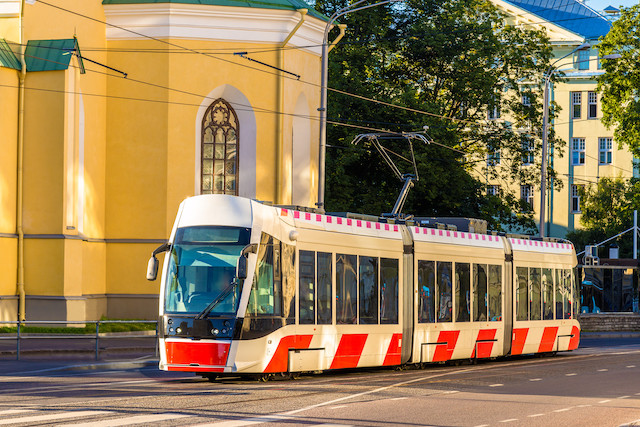Each case--Tallinn, Estonia; Dunkirk, France; and Hasselt, Belgium--had quite different results after their free transport schemes rolled out. Here’s a closer look at each.
Tallinn, Estonia
Population: Approximately 450,000
Why it matters: The city of Tallinn was the first EU capital to provide its citizens with free public transport in January 2013.
In numbers: 2m ride increase between launch and 2018.
In detail: Citizens wanting to take advantage of free transport still need to buy a €2 green card (which visitors can also purchase, although they need to top up accordingly). According to Allan Alaküla, head of Tallinn EU office, the main driver behind the initiative was “social urgency”. On the heels of the financial crisis fares were still “unaffordable to many”, despite a subsidisation of nearly 75% just prior to the scheme. The idea was that in addition to providing “mobility for all”, the local economy would be stimulated simultaneously.
Alaküla says a slight increase in trips was recorded in the first half of 2013, after the scheme was first launched, but has been stable since--140m trips made in 2012 compared to 142m in 2018. This “was absorbed pretty well with previous (underused) capacity,” Alaküla says, with the amount of network adjustments and capacity having “remained in the limits of 5%”. Lost revenue on tickets sales amounted to €12m, although since only official residents are able to take advantage of the scheme, it encouraged individuals to register their official living place as Tallinn--so lost revenue was covered through additional taxpayer inflow.
Overall, Alaküla says, the initiative was a success, “foremost because people are happy with it”. He cites not only the March 2012 local referendum in which 75% of Tallinners voted in favour of free public transport but adds that “current polls indicate that the number of those who support [it slightly] exceeds 90%”.
Dunkirk, France
Population: Just over 90,000, with 257,000 in metropolitan area
Why it matters: With a population similar to that of Luxembourg City, though without the daily influx of frontaliers, Dunkirk rolled out its free bus system in September 2018 and, according to France 24, is aiming to “become a beacon of the greener economy”.
In numbers: Network use increased by 85% in one year after launch.
In detail: Transport is free to all, not just citizens. The concept was already part of Dunkirk mayor Patrice Vergriete’s campaign during the municipal elections of 2014. Dunkirk spokesperson Olivier Coppin told Delano the decision was multifaceted--in part to fight against exclusion, strengthen social bonds and purchasing power, but also for the environmental aspect of reducing noise and air pollution.
Between 1 September 2018 and 31 August 2019, network use increased by 85%. Use during the week and weekend rose 65% and 120%, respectively. The scheme meant the city lost €4.5m in ticket receipts, and not to mention the offer augmentation costing around €11.5m. But in France, as Coppin explains, transport networks are partly paid via corporate tax, while the creation of a high-level network service helped generate an additional €10m. “The rest was self-financed by management savings,” Coppin adds.
The network is still in an “optimisation phase” and further adaptations took place in September 2019 and are planned for January 2020 as well. Socially in particular, the scheme seems to be a success: “A survey showed that 48% of new bus users had previously travelled by private car,” Coppin notes. What’s more, 5% of those surveyed said they have sold their car or decided not to purchase a second vehicle.
Hasselt, Belgium

An image of commuters waiting at a bus stop in Hasselt in 2016, after the free public transport scheme was cancelled. Photo: Shutterstock
Population: Approximately 70,000
Why it matters: The city’s pioneering free public transport scheme, launched in 1997, was cancelled 16 years later.
In numbers: 126% increase in bus passengers over a ten-year period.
In detail: According to Eltis, Europe’s observatory on urban mobility, until June 1997 there had been around 1,000 daily bus passengers but about a decade later the average increased to 12,600. In other terms, data for 1997 shows there were 1.4m travellers in total, compared to over 4.6m by 2006. Eltis cites a “criticism that thorough investigation was never conducted into the effects of the intervention on the transport behaviour of the residents and visitors of the city”.
But there wasn’t just a strain in terms of the uptake--the costs for the city’s transport company, De Lijn, also rose from €967,00 in 1997 to €3.45m by 2007, per Eltis.
This article first appeared in the Winter 2020 issue of Delano magazine.
